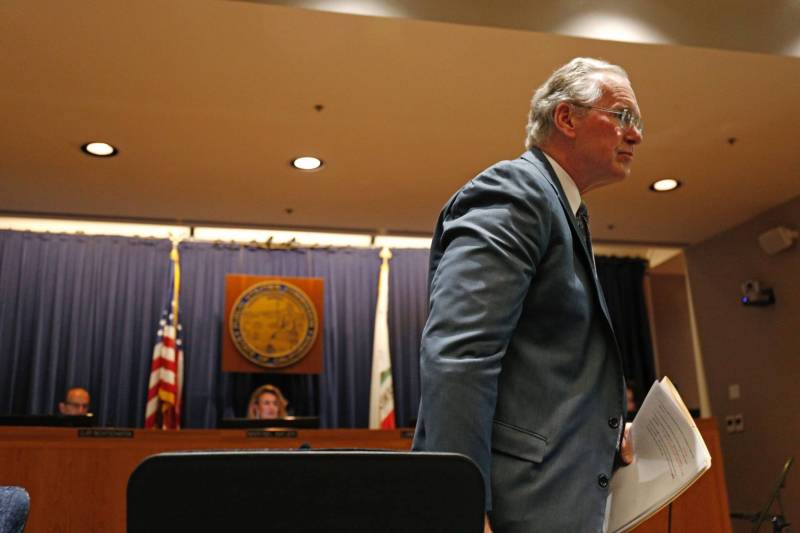Johnson helmed PG&E through last year's fire season, which saw the utility implement unprecedented rolling blackouts across much of California.
Those rolling blackouts didn't stop last October's Kincade Fire – the largest wildfire in the state last year – from roaring into Sonoma County, charring 77,758 acres and destroying 374 structures.
The blackouts, implemented by the utility to prevent its equipment from sparking wildfires during dry and gusty weather conditions, angered many Californians, and some called the policy life threatening.
"He was very cavalier about them, even after the fact, when he was claiming he was taking responsibility. He was still very much maintaining the framework that the shutoffs were an inconvenience and was reluctant to acknowledge that they constituted an emergency in their own right," said Melissa Kasnitz, legal director at The Center for Accessible Technology, which represents the medically vulnerable.
Johnson is credited by PG&E officials with positioning the company's reorganization plan for a quick approval from federal officials and Gov. Gavin Newsom's office, in addition to reaching a $25.5 billion settlement with wildfire victims.
Johnson and Smith will use May and June to transition.
"I have been deeply involved in the board's work helping to prepare PG&E for its successful emergence from bankruptcy," Smith said in a statement.
KQED's Lily Jamali contributed to this story.

